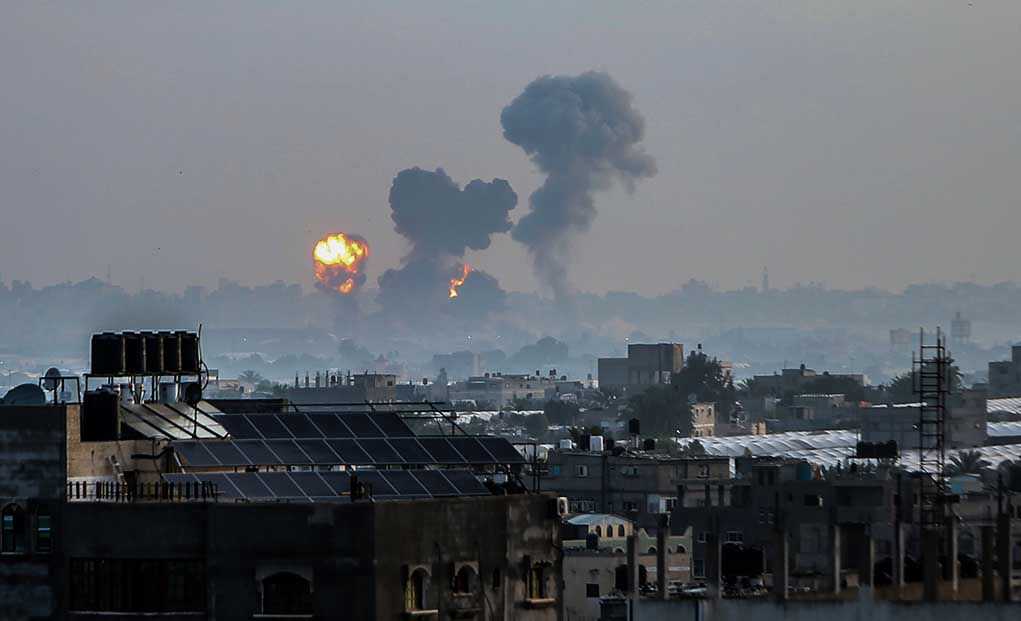
Ukraine’s bold drone strike on a key Russian airbase in Crimea has destroyed or damaged five Russian fighter jets, marking a dramatic escalation in the conflict and raising questions about Russia’s ability to defend its occupied territory.
Story Snapshot
- Ukraine’s Security Service (SBU) claims successful overnight drone attack on Saky airbase in occupied Crimea, destroying or damaging five Russian jets.
- This operation signals Ukraine’s increasing ability to strike high-value Russian military targets deep behind enemy lines.
- No confirmation or denial from Russian officials; Ukrainian claims are consistent across reputable sources but await independent verification.
- The strike may disrupt Russian air operations in the Black Sea and reflects a growing reliance on advanced drone warfare.
Ukrainian Drone Strike Targets Russian Stronghold in Crimea
Ukraine’s Security Service (SBU) announced on August 4, 2025, that it carried out a sophisticated overnight drone operation against the Russian Saky airbase in Crimea, a critical military hub for Moscow’s operations in the Black Sea region. The strike reportedly destroyed one advanced Su-30SM fighter jet, damaged another, and hit three Su-24 bombers as well as a munitions depot. This marks the latest in a series of increasingly audacious Ukrainian attacks on high-value Russian military infrastructure, part of an ongoing campaign to degrade Russian air power and challenge Moscow’s control over occupied territory.
The Saky airbase, long used by Russia to launch missile and bombing raids across southern Ukraine, represents a strategically vital target. Ukrainian officials emphasized that the attack demonstrates their ability to reach deep into Russian-controlled areas and deliver precision strikes on heavily defended assets. The SBU’s elite Alpha unit reportedly executed the operation overnight, bypassing Russian air defenses and striking high-value targets with advanced drone technology. While Ukrainian claims have not been independently verified, they were immediately disseminated by reputable outlets and reinforced by direct statements from Ukrainian officials.
Escalation Reflects Changing Dynamics and Psychological Warfare
Crimea has been under Russian occupation since 2014, and since Russia’s full-scale invasion in 2022, its airbases have played a pivotal role in Moscow’s war effort. However, patterns in 2025 show a sharp increase in Ukrainian cross-border operations, including the June “Operation Spiderweb,” where Ukraine claimed to have destroyed 41 Russian aircraft in a single night, and a wave of drone and missile attacks targeting Russian oil refineries and weapons factories throughout the summer[1][2]. These operations highlight Ukraine’s shift toward asymmetric tactics—leveraging lower-cost drones to inflict outsized damage on expensive Russian equipment and to force Russia to divert resources to protect what it once considered safe rear areas.
Military analysts point to the Saky strike as evidence of Ukraine’s rapid technological adaptation and growing confidence in psychological warfare. By targeting high-profile Russian assets and publicizing the results, Ukraine aims not only to degrade Russia’s material capabilities but also to undermine the morale of Russian forces and the civilian population in occupied Crimea. Ukrainian officials have framed these strikes as “just retribution for every war crime committed against the Ukrainian people,” signaling both resolve and a warning of continued escalation if Russia persists in its aggression.
Russian Silence, Verification Challenges, and Strategic Implications
As of August 4, Russian authorities have neither confirmed nor denied the reported destruction of their aircraft at Saky. This silence is consistent with previous incidents, where Moscow has either downplayed or denied Ukrainian claims of successful strikes on high-value targets[1]. The lack of independent satellite imagery or third-party verification introduces some uncertainty, but Ukrainian assertions have been widely echoed by trusted domestic and international outlets, including The Kyiv Independent and United24 Media.
The immediate impact of the attack is likely to be a temporary disruption of Russian air operations in the Black Sea region and a costly loss of military hardware—each Su-30SM jet is valued between $35 and $50 million. In the longer term, these repeated strikes erode Russian confidence in the security of their rear areas and may force Moscow to further stretch its already pressured air defenses. For Ukrainian civilians, there is concern about potential retaliatory strikes from Russia, a recurring pattern following high-profile Ukrainian operations.
Expert Analysis: Drones and the Future of Warfare
Security and military experts agree that Ukraine’s growing use of drones marks a turning point in modern warfare. Analysts highlight both the sophistication of recent Ukrainian operations and the psychological impact on Russian forces, who must now contend with threats that can reach far beyond the front lines[3]. Scholars in security studies view the Saky strike as a demonstration of resilience and adaptation by Ukraine, facing a far larger adversary with ingenuity and determination.
The broader message to the world is clear: the era of asymmetric warfare is here, and drones are turning the tide in conflicts where the balance of power once seemed set in stone. While the full strategic consequences of the Saky airbase strike remain to be seen, it underscores the vulnerabilities of even the most fortified positions and signals a new phase in the Ukraine-Russia conflict—one marked by rapid innovation, shifting initiative, and the relentless pursuit of freedom in the face of occupation.











